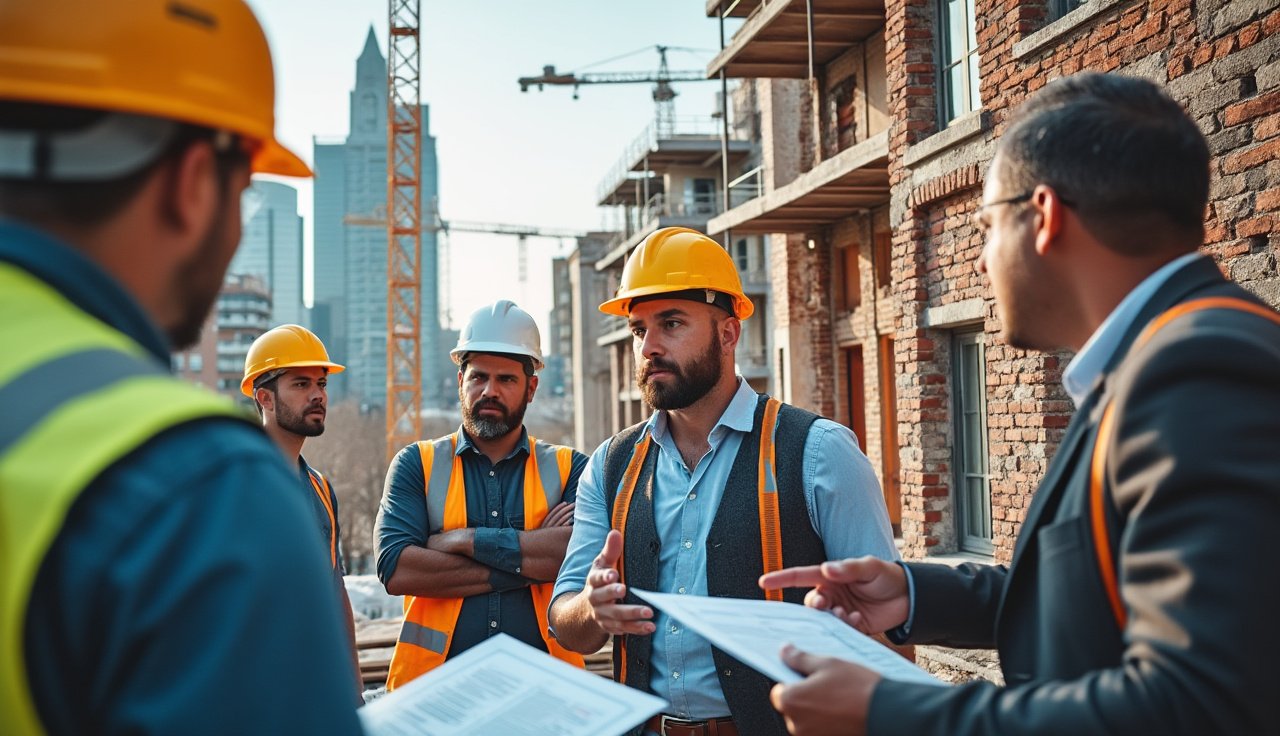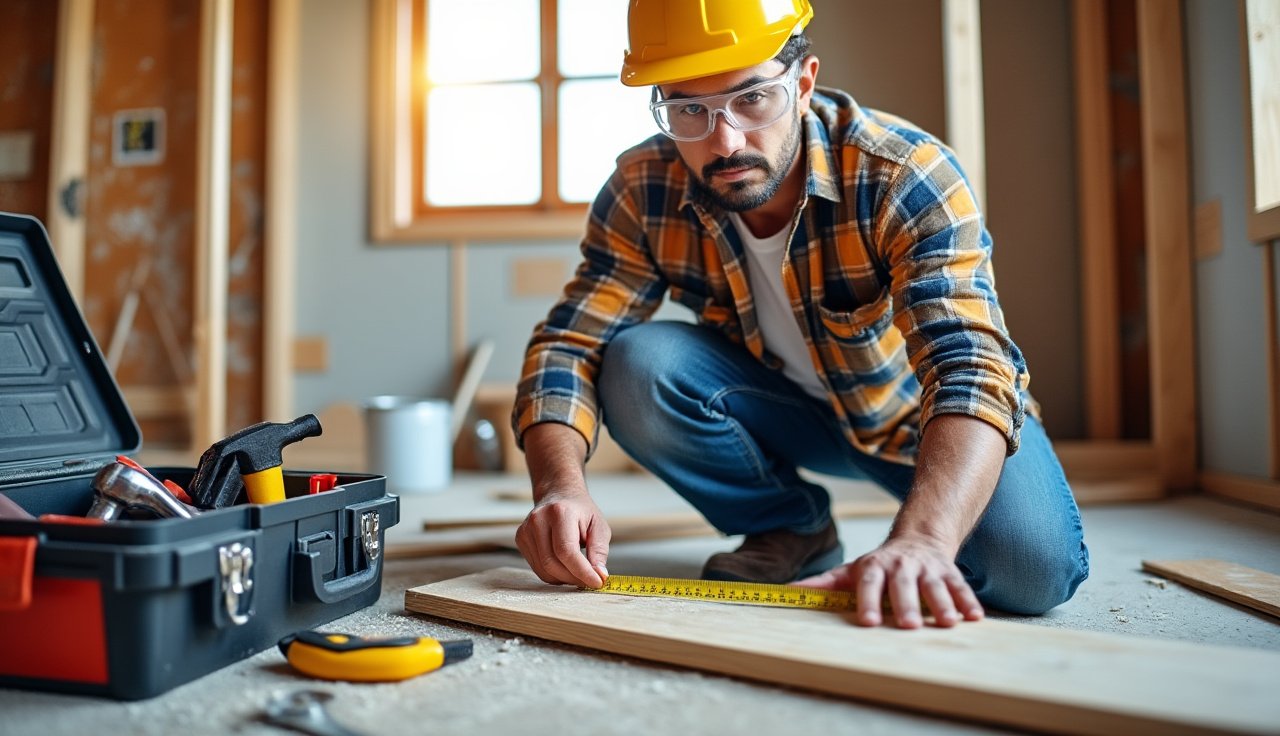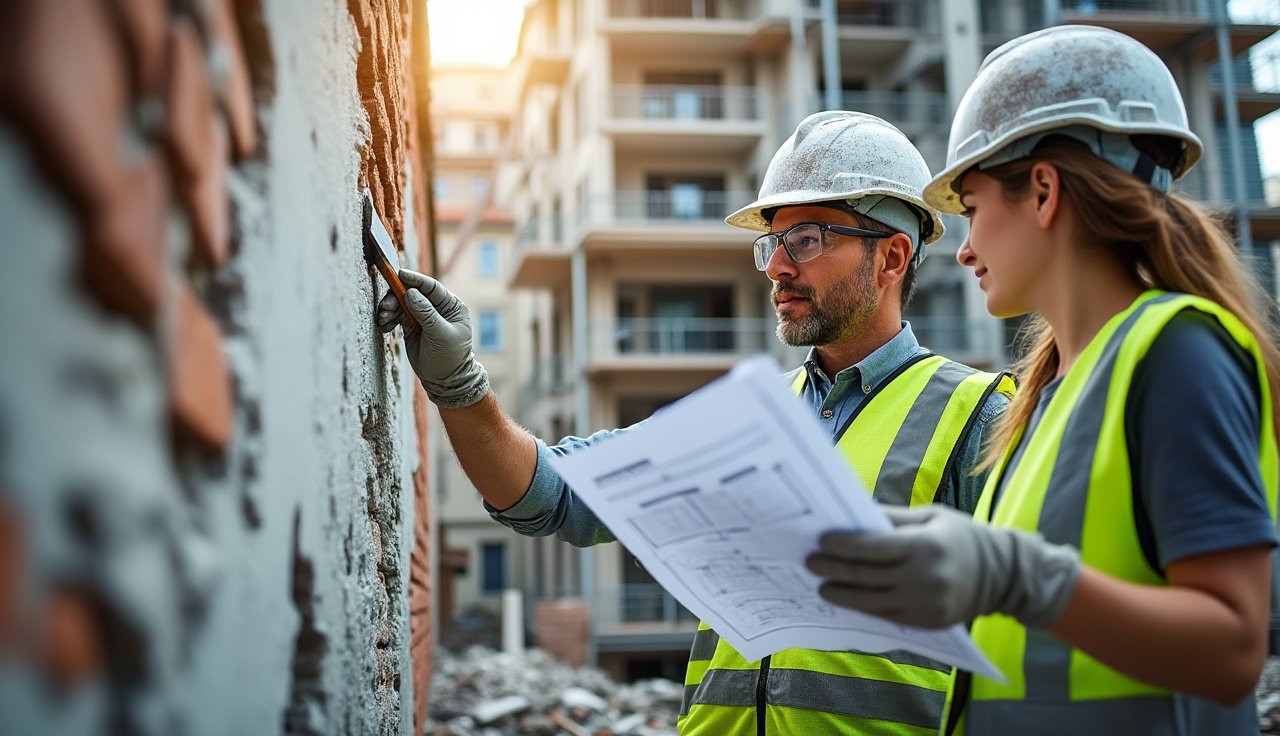Building things and fixing them are two sides of the same coin. When you blend construction and restoration, you get the best of both worlds. This guide shares real-world tips on how to merge new building methods with proven fixing techniques.
We’ll show you how to tackle modern building challenges while respecting historical value. You’ll learn about project planning that works for both new builds and fix-ups. We cover construction management steps that keep your work on track. The restoration process doesn’t have to be hard when you know what to do.
Our tips come from years of hands-on work and the latest data. We focus on sustainable practices that save money and help the planet. Whether you’re fixing an old home or building something new, these expert strategies will help you do it right the first time.
Understanding the Dynamic Between Construction and Restoration

Construction and restoration are two sides of the same coin in the building world. While they share many tools and skills, they serve different needs. Construction focuses on creating new structures, while restoration brings old buildings back to life.
Bridging Old and New: Construction vs. Restoration
Construction involves building new structures from the ground up. It starts with raw land and ends with a finished building. Restoration, however, works with existing structures to repair damage or bring back original features.
The main goals differ too. Construction aims to create modern spaces that meet today’s needs. Restoration tries to keep the soul of old buildings while making them safe and useful again.
Both fields need strong project management skills. They require careful planning, good budgets, and teams of skilled workers. Both must follow building codes and safety standards to protect workers and future users.
Historical preservation adds another layer to restoration work. When working on old buildings, teams must respect the original design while making needed updates. This balance helps keep our heritage conservation efforts alive.
The Role of Repair and Renovation
Renovation and repair services play key roles in both fields. In new construction, repairs fix mistakes or damage during the building process. In restoration, repairs are often the main focus, fixing years of wear and decay.
Home improvement projects may fall under either category. Adding a new room is construction, while fixing an old kitchen is restoration or remodeling.
Structural repair is vital in restoration work. Old buildings often need help with their foundations, walls, or support systems before any other work can start. These repairs ensure the structural integrity remains sound.
Infrastructure repair extends beyond single buildings to bridges, roads, and public works. These projects combine construction and restoration skills to keep our shared spaces safe and working well.
Modern trends like green building and sustainable construction now influence both fields. Today’s projects often aim to save energy, use fewer resources, and last longer than those in the past.
By understanding how construction and restoration work together, we can better preserve our past while building our future. Both fields contribute to urban development that honors history while meeting modern needs.
Data-Driven Insights into Current Trends
The construction and restoration industry is changing fast. New data shows clear shifts in how we build and restore structures today. Let’s explore what the numbers tell us about current trends.
Comparing New Construction vs. Renovation Projects
Recent industry data reveals that renovation projects have increased by 27% over the past three years. Meanwhile, new construction growth sits at just 18%. This shift shows more property owners are choosing to restore existing structures rather than build new ones.
Building renovation costs average $150-200 per square foot, while new construction often exceeds $250-300 per square foot. This cost-effective renovation approach is driving the trend toward restoration.
Materials usage also tells an interesting story. Traditional construction materials like concrete and steel remain dominant, but we’re seeing a 34% increase in reclaimed and repurposed materials for restoration projects.
Sustainability and Energy Efficiency Trends
Green building practices have moved from niche to mainstream. Data shows that:
- 68% of new projects incorporate some sustainable construction elements
- 42% of building restoration work now includes energy efficiency upgrades
- Eco-friendly construction methods reduce operational costs by 23% on average
The focus on energy efficient construction isn’t just good for the planet—it’s good for budgets too. Projects that incorporate these elements see a 15-20% reduction in long-term operating costs.
Emerging Trends in Infrastructure Repair
Infrastructure repair needs continue to grow nationwide. Current data shows:
| Sector | Annual Spending (Billions) | Growth Rate |
|---|---|---|
| Bridges | $12.5 | 8.3% |
| Roads | $28.7 | 6.1% |
| Water Systems | $18.2 | 11.4% |
| Public Buildings | $9.6 | 7.8% |
This data highlights how building maintenance and structural repair are becoming critical priorities. The focus on infrastructure restoration is creating new opportunities for specialists in preservation techniques and repair solutions.
As these trends continue to evolve, construction and restoration professionals must stay informed about the latest data to make strategic decisions for their businesses and projects.
Comparing Construction Management & Restoration Techniques
Project management plays a vital role in both construction and restoration work. Good managers keep projects on time and within budget. In construction management, teams focus on building new structures. For restoration projects, the goal is to bring old buildings back to life.
Both fields need careful planning and oversight. Construction projects require coordination of workers, materials, and equipment. Building restoration demands special care for historical elements while meeting modern needs.
Today’s projects benefit from new tools. Modern construction technology helps teams track progress and spot problems early. In architectural restoration, these tools help preserve structural integrity while meeting building codes.
Integrating Traditional Craftsmanship with Modern Construction Technology
The best results come from blending old and new approaches. Heritage conservation works best when traditional skills meet modern methods. Skilled craftspeople who understand old building techniques are essential for quality historical renovation.
Digital tools now support this work in amazing ways:
– 3D scanning to capture exact details of historic structures
– Computer modeling to test repair solutions before work begins
– Project apps that help teams share information quickly
Adaptive reuse projects transform old buildings for new purposes while keeping their character. This approach is both practical and respectful of history. A factory might become apartments, or a warehouse might turn into offices.
The combination of old craftsmanship and new technology creates better outcomes for property renovation and facility restoration. Buildings last longer, work better, and keep their historical value. This balance helps create spaces that honor the past while serving today’s needs.
Overcoming Challenges with Project Planning and Cost Solutions
Construction and restoration projects often face many bumps along the way. From budget issues to timeline delays, these challenges can make even simple projects feel overwhelming. Most building owners struggle with keeping costs down while still getting quality results. Planning ahead and using smart strategies can help you avoid these common problems.
Effective Project Planning & Budget Optimization
Good project planning starts with clear goals. Before any construction or renovation begins, create a detailed roadmap that includes:
- A complete list of all needed materials
- Realistic timelines for each phase
- Budget breakdowns by category
- Backup plans for common delays
Using detailed construction planning helps prevent costly surprises. Many projects go over budget when unexpected issues arise. A thorough inspection before work begins can spot potential problems early.
Cost effective renovation depends on smart choices. You can save money by:
- Reusing materials when possible
- Getting multiple bids from contractors
- Scheduling work during off-peak seasons
- Focusing on changes that add the most value
The most successful restoration projects balance quality with cost. While it might be tempting to choose the cheapest options, poor quality work often leads to more repairs later. Instead, look for the best value—materials and services that offer durability at reasonable prices.
Sustainable renovation practices not only help the planet but often save money in the long run. Energy-efficient upgrades may cost more upfront but reduce bills for years to come. Many areas also offer tax breaks for green building choices.
Keeping your restoration project on track requires good communication. Regular check-ins with all team members help catch issues before they become expensive problems. A good project manager acts as the central point for all information, making sure everyone works toward the same goals.
By planning carefully and staying flexible, you can overcome the common challenges that plague construction and restoration projects. The result will be a successful project that meets both your vision and your budget.
Innovative Approaches to Sustainable Building Upgrades
The world of construction and restoration is changing fast. Today, more builders focus on eco-friendly methods that help our planet while creating beautiful spaces. These new approaches blend the best of modern construction with care for our environment.
Eco-Friendly Construction and Restoration Practices
Green building is no longer just a trend—it’s becoming the standard. Many construction projects now include:
- Solar panels that cut energy costs
- Recycled materials that reduce waste
- Water-saving fixtures that conserve resources
- Natural insulation that improves efficiency
These sustainable construction methods help buildings use less energy while lasting longer. When we upgrade older buildings, we can add these features too. This makes building restoration both earth-friendly and cost-effective.
Energy efficient construction saves money over time. New windows, better insulation, and smart thermostats reduce utility bills. These improvements pay for themselves through savings.
Adaptive Construction Strategies for Long-Term Benefits
Modern restoration techniques focus on making buildings useful for years to come. This approach, called adaptive reuse, gives old structures new life. Instead of demolishing historic buildings, we can update them for today’s needs.
The benefits of sustainable renovation include:
- Lower operating costs through reduced energy use
- Healthier indoor spaces with better air quality
- Stronger community connections by preserving local history
- Reduced environmental impact compared to new construction
When planning building upgrades, think beyond today. Choose materials and systems that will last decades, not years. This long-term thinking is at the heart of truly sustainable building.
By combining historical preservation with modern technology, we create spaces that honor the past while embracing the future. This balance makes buildings both beautiful and practical for generations to come.
Conclusion
Construction and restoration work together to shape our built world. By mixing modern building techniques with careful heritage preservation, we create spaces that honor the past while meeting today’s needs. The best projects use data-driven planning and sustainable practices to stay on budget and reduce waste. Remember that successful restoration projects need both traditional skills and new tools. Whether you’re fixing an old home or building something new, focus on quality materials and expert guidance. Ready to start your next project? Connect with certified construction and restoration professionals who understand both worlds. Your property deserves the perfect balance of innovation and respect for its history. Take that first step today and transform your space with confidence!





